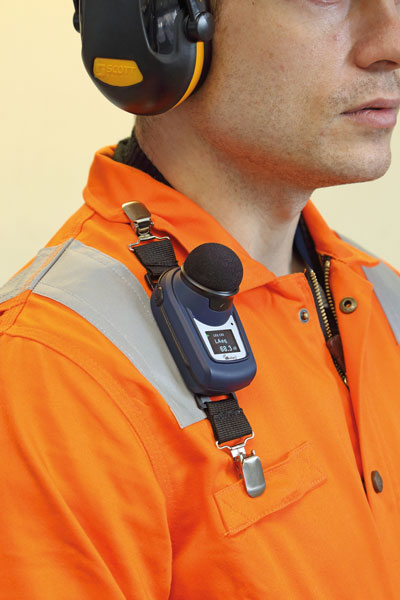Millions of workers remain at risk of noise induced hearing loss. But this invisible injury can be prevented, says Tim Turney, Casella global marketing manager.

The images associated with a workplace injury are dramatic and visual – falls from height, machinery crush injuries, chemical burns: all such serious incidents warrant due care and precautions from workers and workplaces. However, an equally serious and pervasive type of workplace injury is much less visual. In fact, it cannot be seen at all.
Noise induced hearing loss (NIHL) is a permanent and life-changing condition that can seriously impair a worker’s quality of life. World Health Organization figures indicate that noise exposure contributes to 22% of workplace-related health issues. In the UK alone, HSE statistics suggest that over a million employees are exposed to levels of noise at work which put them at risk of NIHL. It was estimated that between 2016/17 and 2018/19, 21,000 workers suffered from work-related hearing problems.
NIHL can lead to long-term consequences felt both inside and outside the workplace. Sufferers face social isolation and increased anxiety because of impaired communication and are put at greater risk in the workplace due to a decreased ability to hear audio cues warning of a potential hazard (such as alarms or machine noise).
It must be remembered that NIHL is preventable. The figures serve to reinforce the fact that, despite advances in health and safety culture and committed legislation covering workplace noise, including the Control of Noise at Work Regulations 2006, it is vital that employers and employees alike understand and are committed to the need for an effective programme of noise monitoring and control measures. This relies on two key elements – training and tools.
Training
Whether conducted in person or in a digital format, courses that provide a firm grounding in the mechanics and methodology of noise exposure and monitoring are the foundation of any comprehensive workplace programme.
From covering the basic biology of how the ear reacts to and can be damaged by sound, courses should also cover topics including the parameters and terminology of noise and monitoring, and legislation surrounding noise at work. Instruction on the practical use of instrumentation such as noise dosimeters and sound level meters should be a core component of training, alongside how they are calibrated, and how to calculate and interpret results accurately.
Tools
To provide a comprehensive picture of noise exposure and sources in a workplace, two main tools are used – noise dosimeters and sound level meters. Dosimeters are body-worn monitoring devices that are used to give readings of workers’ noise exposure as they undertake their daily tasks. Sound level meters provide highly accurate static spot readings of noise sources.
Sound level meters are hand-held devices, enabling measurements to be taken at ear level with the instrument pointing at the noise source. If workers are likely to be exposed to high levels of impulsive noise, emitted from heavy pressing operations or sheet metal working, peak noises must be measured for accurate results and compared with peak action levels. Data captured by SLMs can also be used to demarcate noise control areas and select appropriate hearing protection and attenuation.
Highly mobile workers can employ a small body-mounted noise dosimeter to collect their own individual exposure data. The employee wears the dosimeter for a full shift, and data is logged instantly. When downloaded to another device, the time history of the noise exposure is detailed, revealing where high exposure occurs throughout the day.
Advances including Bluetooth connectivity and partner software or apps can allow safety managers to record, download and interpret data from units remotely, without needing to interrupt workers during their duties.
Casella manufactures noise monitoring equipment and provides training on workplace noise and other workplace health hazards. To find out more about its products and free training webinars, visit www.casellasolutions.com

